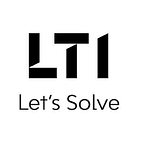In our recent discussion with a client’s team, we asked a few questions to connect the missing dots towards the alignment of the process pattern and alternative flows they usually take in a few cases of their business. We observed typical business challenges like –
- Siloed teamwork
- Over-desk-discussions
- People-dependent data pointers/excel sheets
- Non-centralized products/services and their prices
- Many back-and-forth queries and responses within the team and across end customers
- Delay in end customer responses
- A delayed (and stressful) approval process
- Abrupt and inappropriate discounts
- Time-consuming quotation document reviews
- Delay in the deal closure process and contract milestones
These are typical challenges we usually hear in the first session of any client workshop, but the crux of the matter remains the same. The client team was expecting us to provide some solution to fix this and turn it around quickly as always!
After some introspection, we asked if they were aware of the end-to-end process of Lead-To-Revenue (L2R). Few of them were aware while others were not. So, we explained to them the process in detail and how it fits in their current architectural framework. We further explained how the process and related products are getting consolidated, integrated to serve clients better.
As per industry experts and analyst reports, cloud SaaS platform-based products with OpEx subscription-based model will be the future for any enterprise to gain customer loyalty, confidence, quality delivery, and revenue (of course!). It will also benefit social collaboration.
And like any game of puzzle, we should be aware of all the interlocking pieces. For example, key segments or functional modules of Lead-To-Revenue are –
- CPQ (Configure-Price-Quote)
- CLM (Contract Lifecycle Management)
- RM&M (Revenue Management and Monetization)
We explained various products categorized under each functional module and their ratings and analysis from different analysts’ reports. (I want to bring some important points to your attention hence rushing through different discussions, but definitely, I will cover those in upcoming posts, so stay glued 😊)
The client’s challenges being discussed were primarily from the CPQ area.
Their query was, ‘Why is it important to focus on CPQ instead of merely resolving current challenges?
We explained the significance and benefits of CPQ in-depth to answer it.
Here are those pointers:
- Reduce sales cycles and quoting errors with automated workflows for pulling accurate product info, schematics, and (contract-based) pricing into quotes on any device.
- Centralized and ever accessible data with cloud SaaS platform in place, siloed teamwork would be a problem of the past, due to provision of centralized and secure data which can be further integrated or migrated as per the need.
- Increase the deal size and win rates by recommending products, upsells, and cross-sells based on purchase history.
- Quick launch of new products/services and pricing with help of no-code configuration tools. Any admin member can easily deploy and launch new products/services configurations along with pricing changes without much technical support.
- Simplify order capture and fulfillment of complex products by being flexible to create bundles, options, accessories, and sub-products or assembly items, manage pricing hierarchies & tiers across multiple partners & regions.
- Offer self-service options & improve multi-channel performance by keeping all channels like e-Commerce, mobile, social, or tele sales, connected and on track.
- Improve customer retention and partner loyalty by keeping customers & partners updated and notified to track contractual obligations, products, and prices.
- Improve Efficiency and Effectiveness with help of intelligent insights and automated actions (in various functionalities).
And in the same discussion, we showcased a few L2R products demos about their challenges. One of the demo phases was to quickly deploy the product/service as per the client’s need, which was so effective due to no-code and entailed purely configuration for cloud SaaS-based L2R product range. We configured the basic product and its common attributes along with a few product rules and pricing constraints on the way and poof, it was ready to deploy for production use!
As a solution architect, my role was to understand the challenges and provide the most effective and adaptable, quality solution which should be also user-friendly and should involve minimal integrations (and budget-friendly too!).
At the end of the session, it was another cup of hot coffee with the same client team in the same conference room but the atmosphere was more tranquil & serene and we were thinking about the next challenge set we would like to solve.
What are your challenges in the L2R process? Let’s Solve!
